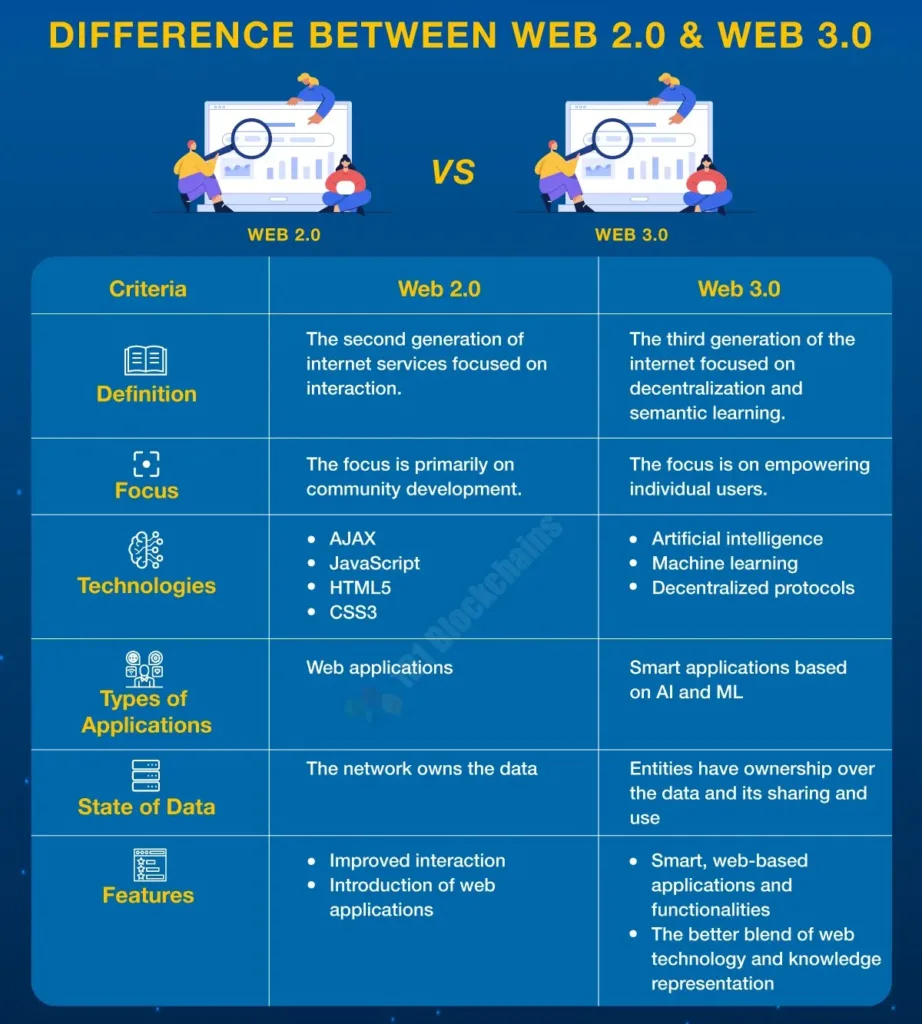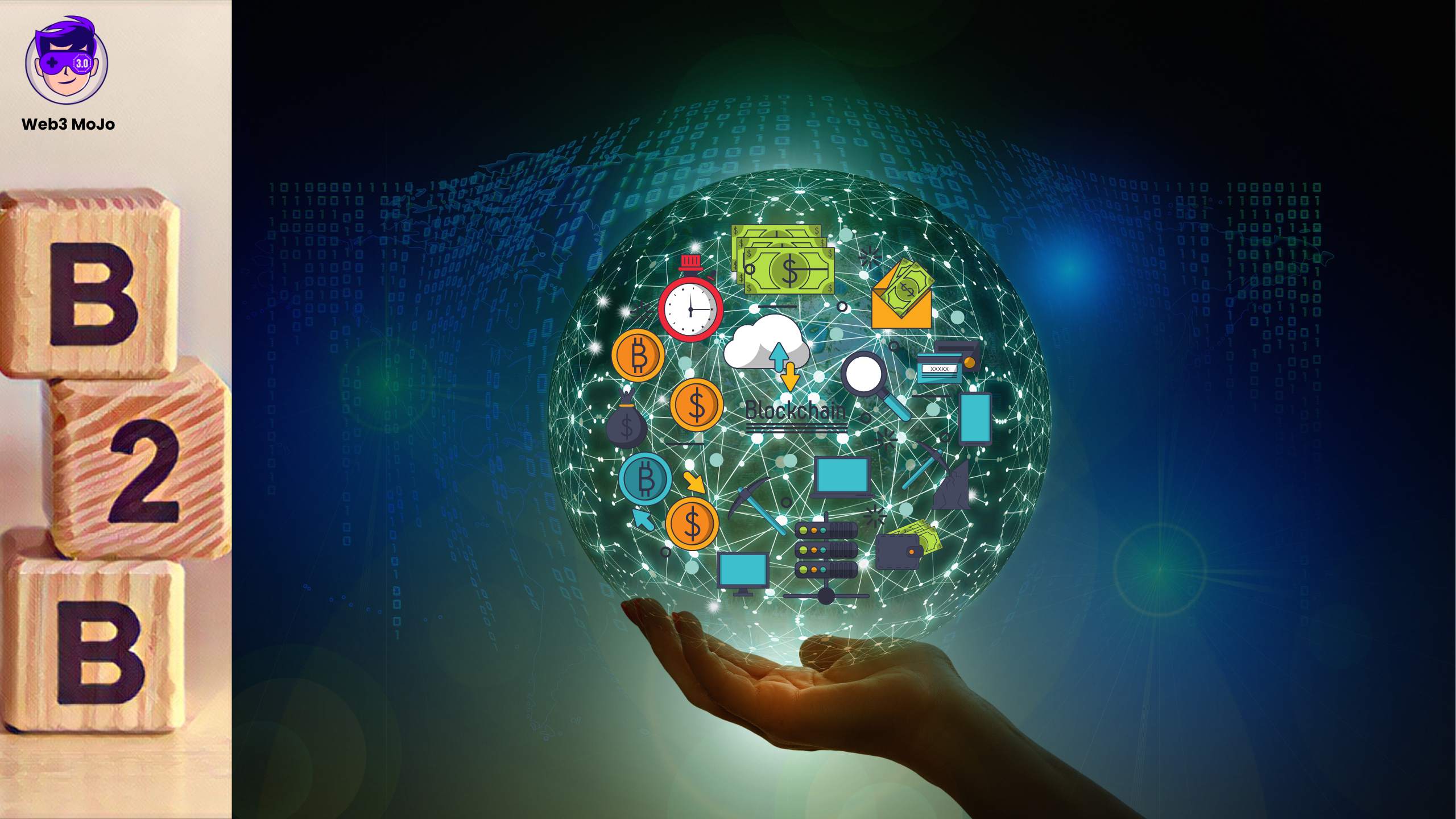I. Introduction
Web3, also known as the decentralized web, represents the next generation of the internet. It is a concept that aims to create a version of the internet that is powered by blockchain technology. This new internet era is characterized by a decentralized network and user control over data. According to a report by PwC, the market size of blockchain technology is expected to surge to 1.76 trillion USD by 2030, indicating the growing significance of Web3 technologies.
The decentralized economy will reshape how businesses collaborate and create value. – Joseph Lubin, Co-Founder of Ethereum & Founder of ConsenSys
Explanation of the concept of decentralization
Decentralization is a system where no single entity has control, but power and control are distributed among a network of computers, also known as nodes. In the context of Web3, decentralization means that applications and services are not owned or controlled by a single entity, but are run by a network of users. This eliminates the need for intermediaries and allows for peer-to-peer interactions.
In the B2B sector, Web3 can revolutionize how businesses interact and transact with each other. It can provide enhanced security, transparency, and efficiency, which are crucial in B2B transactions. According to a survey by Deloitte, 53% of respondents stated that blockchain technology has become a critical priority for their organizations in 2020, up from 43% in 2019. This shows the increasing importance of Web3 in the B2B landscape.
II. Understanding Web3
A. Detailed explanation of Web3
Web3, or the decentralized web, is a vision for a new iteration of the internet that is built on the backbone of blockchain technology and decentralized networks. It aims to create an online environment where users have control over their own data and digital identities. In Web3, applications are decentralized, meaning they are not controlled by any single entity, but are run on a network of nodes.
B. Differences between Web2 and Web3
Web2, the current version of the internet, is centralized and largely controlled by tech giants who own the majority of data and digital services. In contrast, Web3 is a decentralized version of the internet that gives control back to the users. In Web3, users own their data, have their digital identities, and can interact directly with each other without intermediaries.
C. Key features of Web3 that impact businesses
Web3 offers several key features that can significantly impact businesses. These include:
- Decentralization: Web3 applications are not owned or controlled by a single entity, but are run by a network of users. This can provide enhanced security and transparency.
- Interoperability: Web3 allows for different blockchain networks to interact with each other, enabling more efficient and flexible business operations.
- User Control: In Web3, users have control over their own data and digital identities, which can lead to increased trust and engagement.
- Smart Contracts: These are self-executing contracts with the terms of the agreement directly written into code. They automate and streamline business processes, reducing the need for intermediaries.
- Token Economy: Web3 enables the creation of token economies, where digital assets can be traded and exchanged, opening up new business models and revenue streams.
Let’s visualize the differences between Web2 and Web3 with a diagram:

III. The Concept of Decentralization
A. Detailed explanation of decentralization
Decentralization is a system where no single entity has control, but power and control are distributed among a network of computers, also known as nodes. This is a key principle of blockchain technology, which is the foundation of Web3. In a decentralized system, decisions are made collectively by the network, providing a level of transparency and security that is not possible in centralized systems.
B. Benefits of decentralization in business
Decentralization offers several benefits for businesses:
- Increased Security: Decentralized systems are less vulnerable to attacks because there is no single point of failure.
- Transparency: All transactions in a decentralized network are visible to all participants, increasing trust and accountability.
- Efficiency: Decentralized systems can automate and streamline processes, reducing the need for intermediaries and lowering costs.
- Resilience: Decentralized systems are more resilient to failures as they do not rely on a single entity or server.
C. Real-world examples of decentralization
Several companies have already started leveraging the power of decentralization. For instance, De Beers, the diamond company, is using blockchain technology to track the journey of diamonds from the mine to the customer, ensuring they are conflict-free. Another example is IBM’s Food Trust blockchain, which provides transparency and traceability in the food supply chain.
IV. Web3 in B2B Business Models
A. Current state of B2B business models
The current B2B business models largely rely on intermediaries and centralized systems for transactions. This can lead to inefficiencies, lack of transparency, and increased costs. Moreover, data security is a major concern in the current B2B landscape.
B. Potential impact of Web3 on B2B transactions
Web3 has the potential to revolutionize B2B transactions by providing a decentralized platform for businesses to interact directly with each other. This can lead to:
- Enhanced Security: With blockchain technology, all transactions are encrypted and can be traced, reducing the risk of fraud.
- Increased Efficiency: Smart contracts can automate and streamline B2B transactions, reducing the need for intermediaries and lowering costs.
- Greater Transparency: All transactions on the blockchain are visible to all participants, increasing trust and accountability.
C. Case studies of businesses already leveraging Web3
Several businesses are already leveraging Web3 in their B2B transactions. For instance, Maersk, the world’s largest shipping company, has partnered with IBM to create TradeLens, a blockchain-based platform for tracking global shipments. This has resulted in increased efficiency and transparency in their operations. Another example is the Baseline Protocol, an open-source initiative that combines advances in cryptography, messaging, and blockchain to deliver secure and private business processes at low cost via the public Ethereum Mainnet. Companies like Microsoft, EY, and ConsenSys are part of this initiative.
V. Challenges and Opportunities
A. Potential challenges in implementing Web3 in B2B
While Web3 presents numerous opportunities, it also comes with its own set of challenges. These include:
- Technological Complexity: The implementation of Web3 technologies requires a deep understanding of blockchain and related technologies, which can be complex and challenging for many businesses.
- Regulatory Uncertainty: The regulatory landscape for blockchain and cryptocurrencies is still evolving, which can create uncertainty for businesses.
- Scalability: While blockchain networks offer many benefits, they currently face issues with scalability, which can limit their ability to handle large volumes of transactions.
B. Opportunities and benefits that Web3 presents for B2B businesses
Despite these challenges, Web3 presents numerous opportunities for B2B businesses:
- Enhanced Security: Web3 technologies can provide enhanced security for B2B transactions, reducing the risk of fraud.
- Increased Efficiency: The use of smart contracts can automate and streamline B2B transactions, reducing the need for intermediaries and lowering costs.
- Greater Transparency: Web3 technologies can provide greater transparency in B2B transactions, increasing trust and accountability.
C. Predictions for the future of B2B business models with Web3
As Web3 technologies continue to evolve, they are expected to play an increasingly important role in B2B business models. We can expect to see more businesses leveraging blockchain for secure, transparent, and efficient transactions. Furthermore, the use of token economies could open up new business models and revenue streams.
B2B in Web3 is about efficiency, transparency & eliminating unnecessary intermediaries. – Richard Gendal Brown, CTO at R3

VI. Conclusion
In this article, we’ve explored the concept of Web3 and its significance in the context of B2B business models. We’ve discussed the benefits of decentralization and how Web3 technologies can enhance security, increase efficiency, and provide greater transparency in B2B transactions.
The advent of Web3 represents a significant shift in the way businesses interact and transact with each other. While there are challenges to overcome, the potential benefits of Web3 for B2B businesses are immense. As we move towards a more decentralized internet, businesses that are able to adapt and leverage these technologies will be well-positioned to thrive in the future.
Encouragement for B2B businesses to explore and adopt Web3 technologies
For B2B businesses, the time to explore and adopt Web3 technologies is now. By doing so, they can gain a competitive edge, enhance their operations, and prepare for the future of business transactions. The journey may be challenging, but the potential rewards make it a worthwhile endeavor.
FAQs
Web3, or the decentralized web, represents a significant shift in how businesses can operate online. It provides a platform where transactions are transparent, secure, and do not require intermediaries. This can lead to increased efficiency, reduced costs, and enhanced trust with customers and partners. Web3 also enables new business models, such as token economies, where digital assets can be traded and exchanged.
B2B web refers to online platforms, tools, and technologies that facilitate business-to-business transactions and interactions. This can include e-commerce platforms, digital marketing tools, online communication tools, and more. B2B web technologies enable businesses to interact and transact with each other online, often leading to increased efficiency and reduced costs.
Blockchain in B2B refers to the use of blockchain technology to facilitate business-to-business transactions. Blockchain can provide a secure, transparent, and decentralized platform for B2B transactions, enhancing trust and reducing the need for intermediaries. It can also automate and streamline B2B transactions through the use of smart contracts.
Blockchain can be used in B2B in several ways. It can provide a secure and transparent platform for transactions, reducing the risk of fraud and enhancing trust. It can also automate and streamline B2B transactions through the use of smart contracts, reducing the need for intermediaries and lowering costs. Furthermore, blockchain can provide traceability in supply chains, ensuring the authenticity of products and services.
Blockchain can be used in both B2B (Business-to-Business) and B2C (Business-to-Consumer) contexts. In B2B, it can enhance the efficiency, transparency, and security of transactions between businesses. In B2C, it can provide consumers with greater transparency and control over their data, and enable new business models such as peer-to-peer transactions.
Yes, blockchain can be used in e-commerce to enhance security, transparency, and efficiency. It can provide a secure platform for transactions, reducing the risk of fraud. It can also provide transparency, allowing consumers to verify the authenticity of products. Furthermore, blockchain can enable peer-to-peer transactions, reducing the need for intermediaries.
Blockchain offers several advantages for businesses. It can provide a secure and transparent platform for transactions, enhancing trust and reducing the risk of fraud. It can also automate and streamline business processes, reducing the need for intermediaries and lowering costs. Furthermore, blockchain can provide traceability, ensuring the authenticity of products and services.
